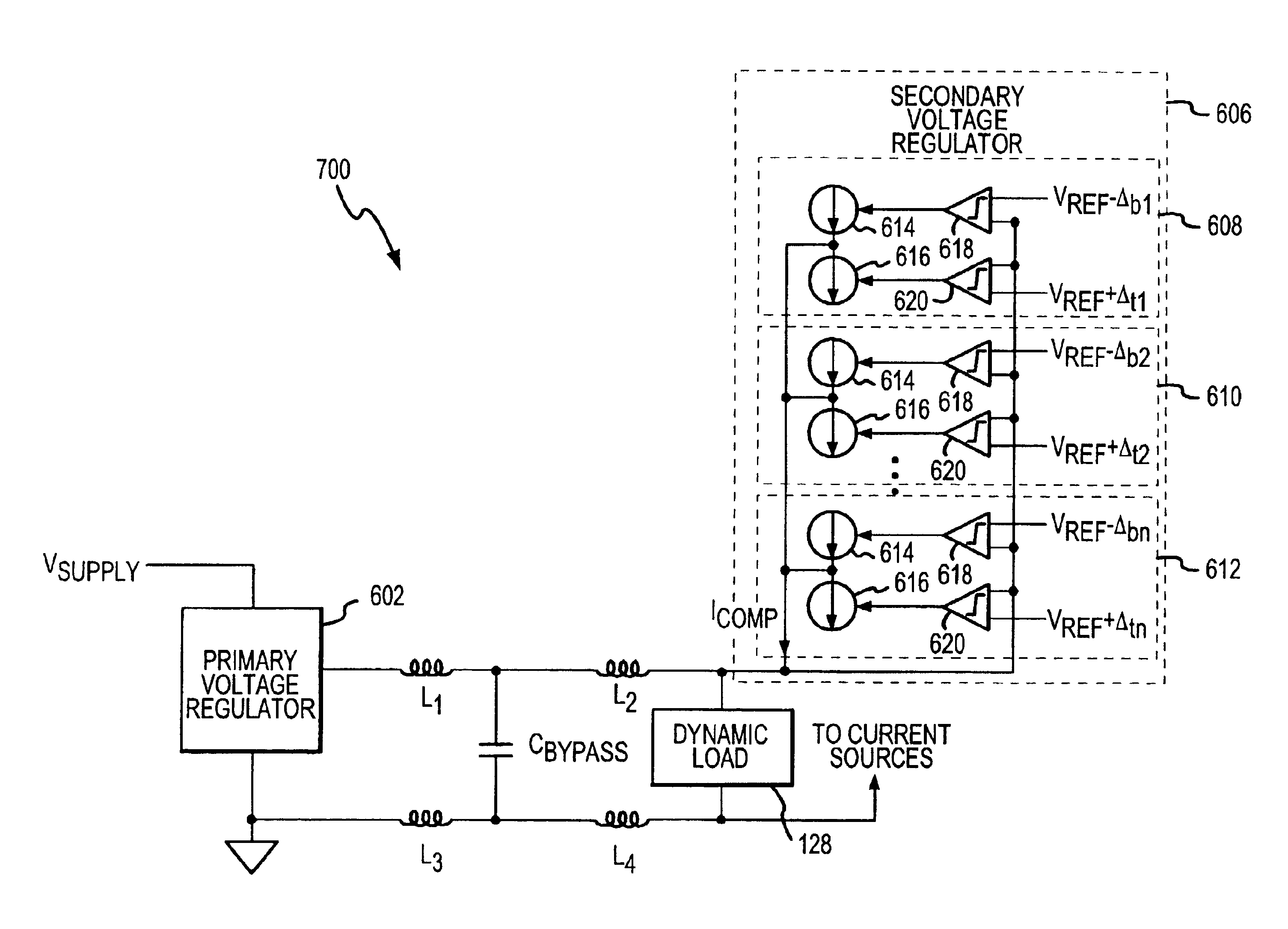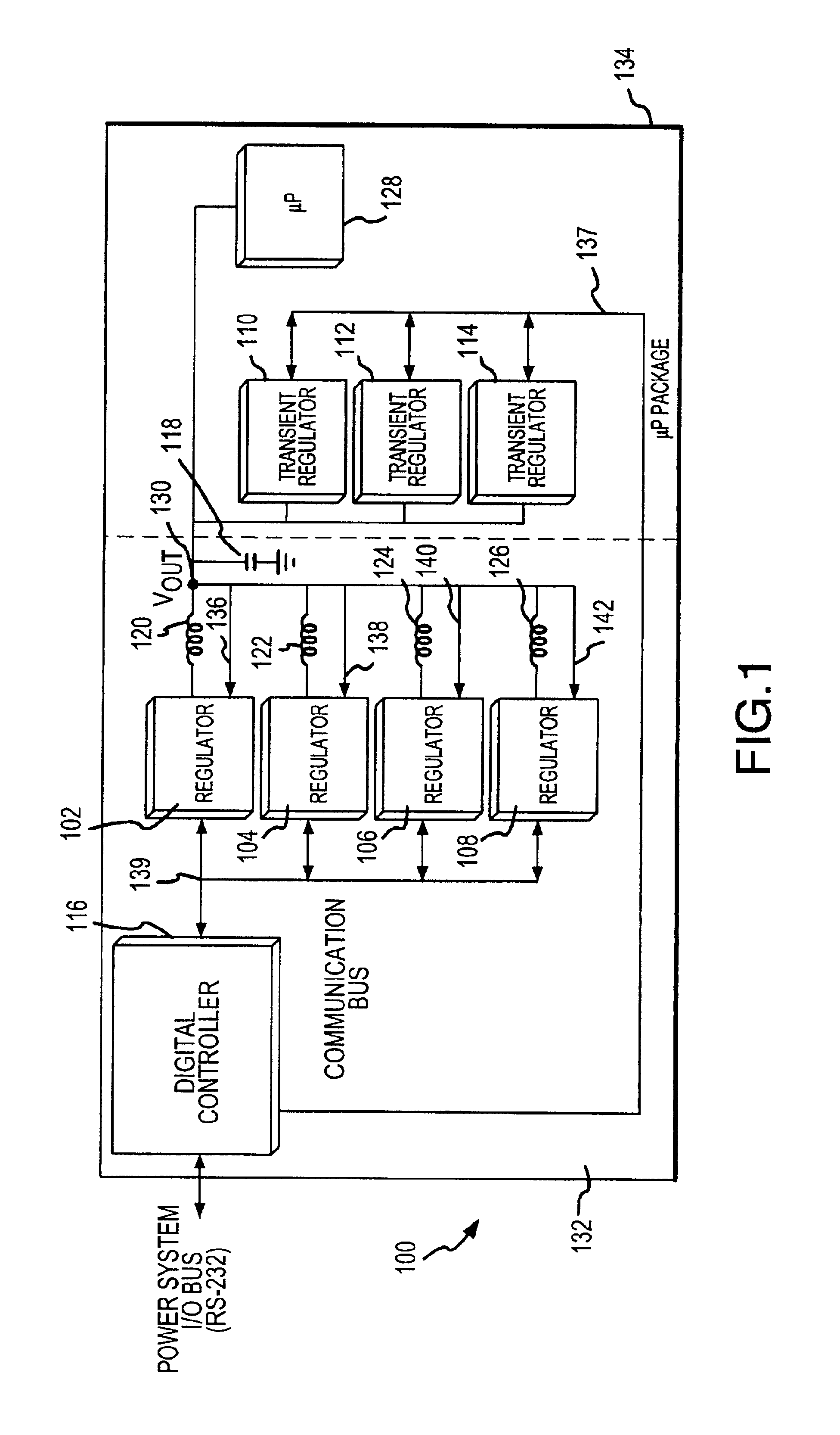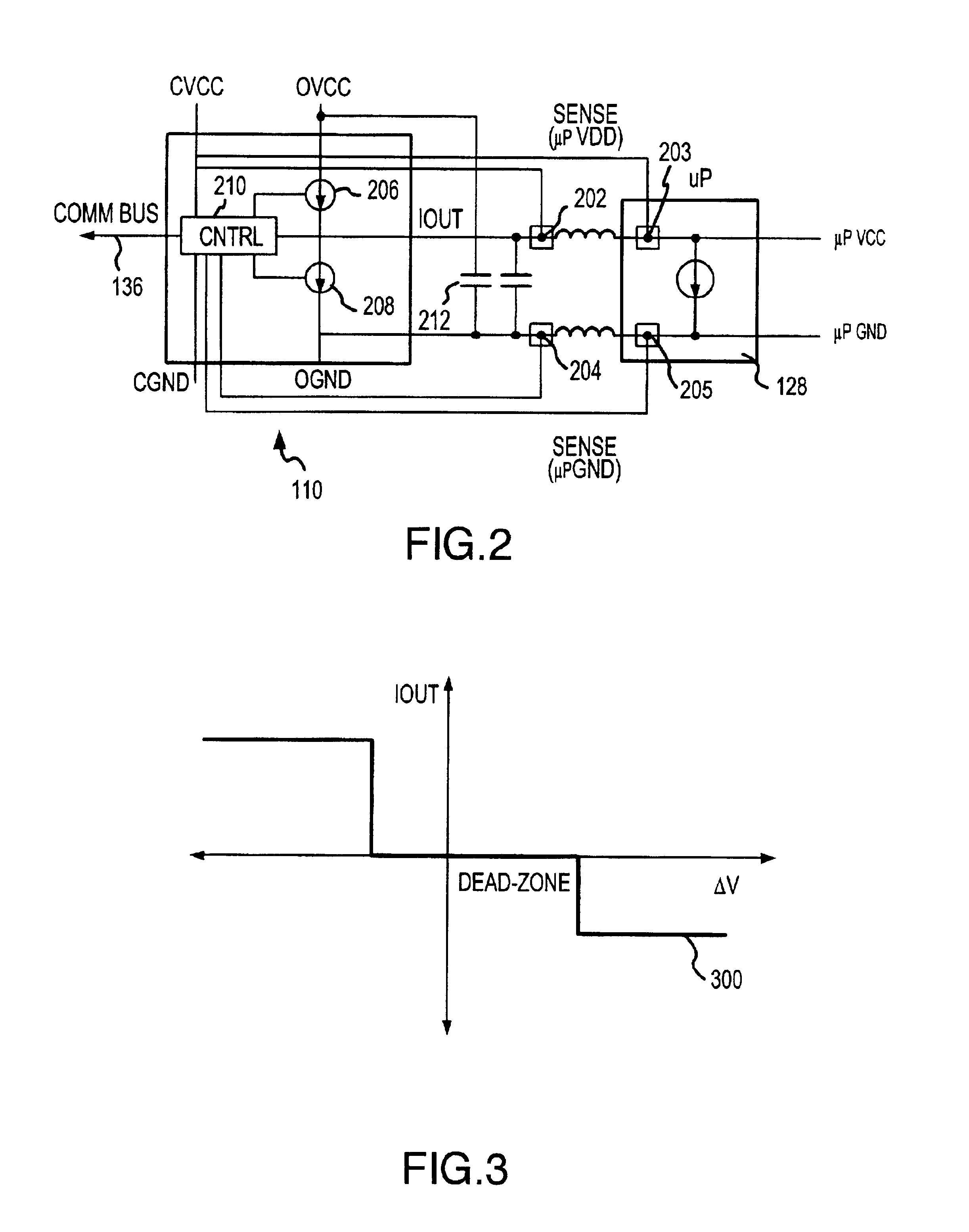Method and apparatus for providing wideband power regulation to a microelectronic device
a microelectronic device and wideband power regulation technology, applied in the direction of process and machine control, electronic components association, printed circuit non-printed electric components, etc., can solve the problem of increasing the severity of transient power demands and the frequency of events, and the use of power regulation systems that only employ decoupling capacitors to compensate for or regulate transient power demands becomes increasingly problemati
- Summary
- Abstract
- Description
- Claims
- Application Information
AI Technical Summary
Benefits of technology
Problems solved by technology
Method used
Image
Examples
Embodiment Construction
[0032]The present invention is described herein in terms of various functional components and various processing steps. It should be appreciated that such functional components may be realized by any number of hardware or structural components configured to perform the specified functions. For example, the present invention may employ various integrated components comprised of various electrical devices, e.g., resistors, transistors, capacitors, diodes and the like, whose values may be suitably configured for various intended purposes. In addition, the present invention may be practiced in any integrated circuit application where high-frequency, low-voltage power requirements are desired. Such general applications that may be appreciated by those skilled in the art in light of the present disclosure are not described in detail. Further, it should be noted that while various components may be suitably coupled or connected to other components within exemplary circuits, such connection...
PUM
 Login to View More
Login to View More Abstract
Description
Claims
Application Information
 Login to View More
Login to View More - R&D
- Intellectual Property
- Life Sciences
- Materials
- Tech Scout
- Unparalleled Data Quality
- Higher Quality Content
- 60% Fewer Hallucinations
Browse by: Latest US Patents, China's latest patents, Technical Efficacy Thesaurus, Application Domain, Technology Topic, Popular Technical Reports.
© 2025 PatSnap. All rights reserved.Legal|Privacy policy|Modern Slavery Act Transparency Statement|Sitemap|About US| Contact US: help@patsnap.com



